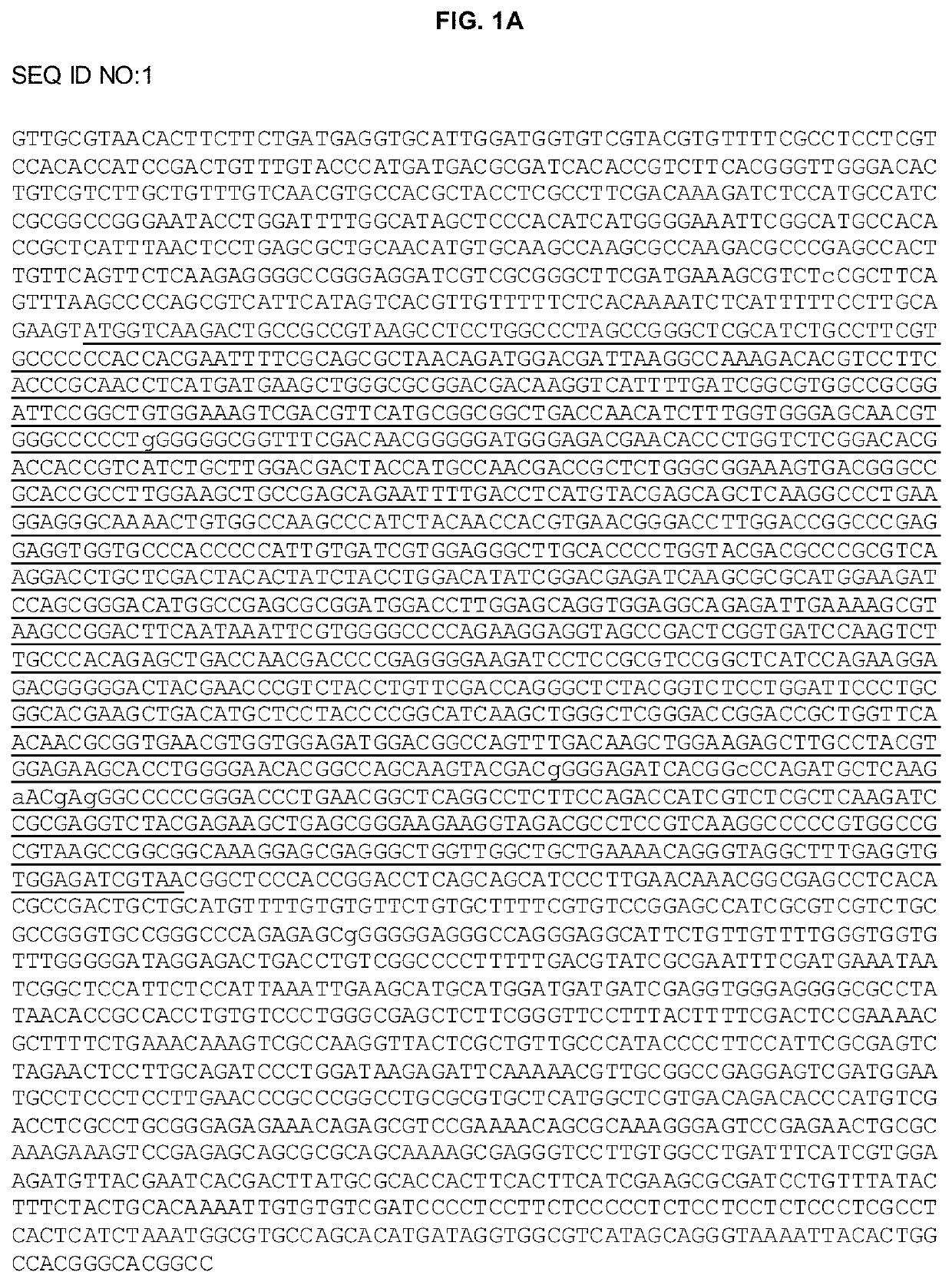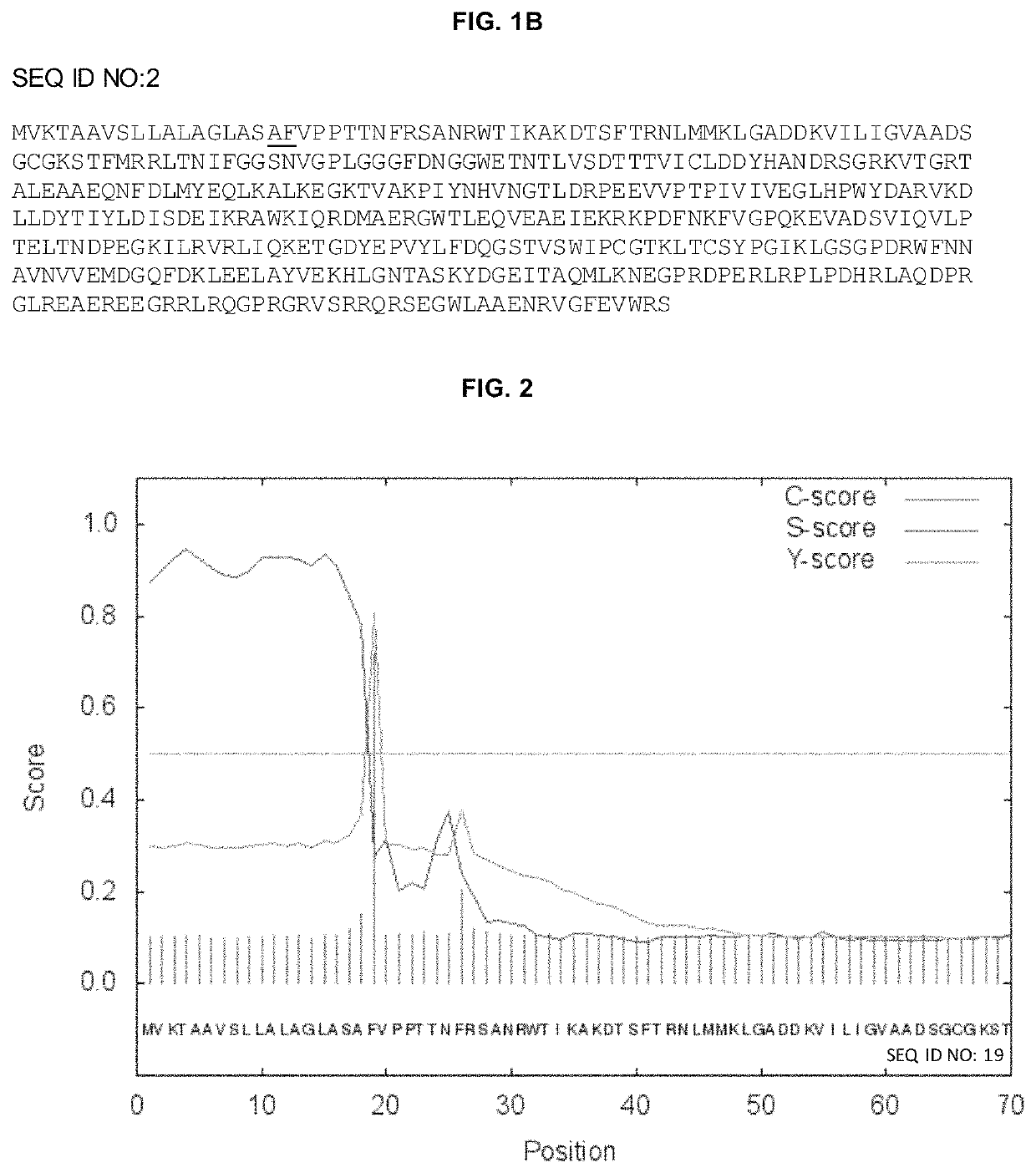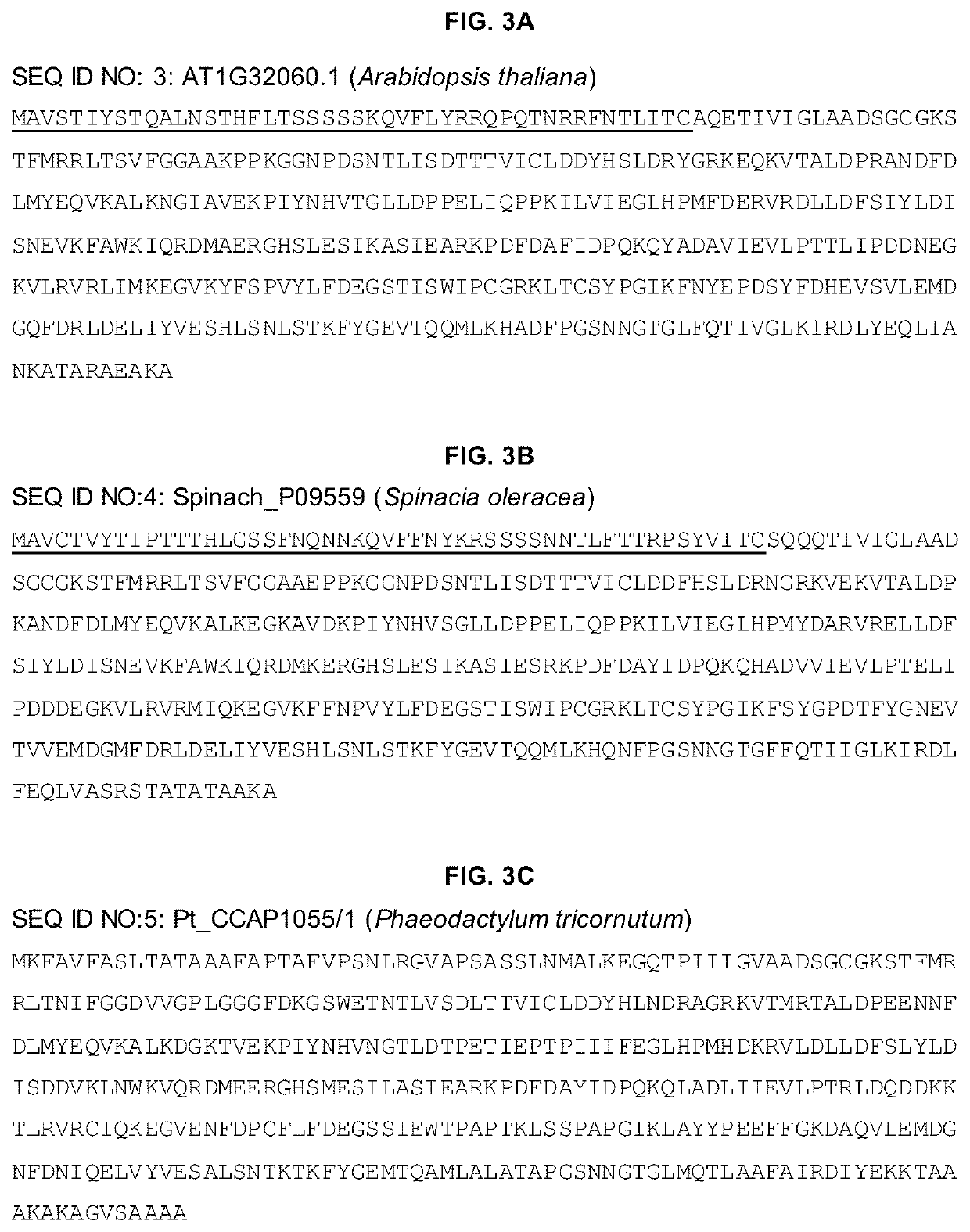Chloroplast targeting peptide sequence derived from nannochloropsis phosphoribulokinase and methods for use
a technology of phosphoribulokinase and chloroplast, which is applied in the field of gene engineering of microalgae, can solve the problems of inability to fully understand the features of bts, the transformation of chloroplasts, and the limitation of biotechnological applications to nuclear transformation, so as to promote robust accumulation and efficient target nuclear-encoded recombinant proteins.
- Summary
- Abstract
- Description
- Claims
- Application Information
AI Technical Summary
Benefits of technology
Problems solved by technology
Method used
Image
Examples
example 2
Promotes Sustained and Uniform Transgene Expression
Material and Methods
Cell Cultivation
[0130]Nannochloropsis gaditana Lubian Strain CCMP526 (Culture Collection of Marine Phytoplankton, now known as NCMA: National Center for Marine Algae and Microbiota) was used in all experiments. N. gaditana was grown at 20° C. in 250 mL flask in artificial seawater (ESAW) medium (Table 1) using ten times enriched nitrogen and phosphate sources (5,49 10−3 M NaNO3 and 2,24 10−4 NaH3PO4) called “10×ESAW”, or nitrogen-depleted medium, where NaNO3 was omitted. Cells were grown on a 12:12 light (60 μE m−2 sec−1) / dark cycle. For nuclear transformation, cells were grown under constant light in f / 2 medium (Table 1) until they reached the late exponential phase. All cultures were maintained on f / 2 plates solidified with 1% agar under a 12:12 light / dark regime in presence (transformed strains) or absence (wild-type strain) of the selective antibiotic zeocin (7 μg mL−1). When needed, cells were counted using ...
example 3
of Nuclear-Encoded Recombinant Proteins Into the Chloroplast Via Fusion to the BTS of NgPRK
Materials and Methods
[0149]See Example 2 for the generation of the constructs, nuclear transformation of N. gaditana and cell culture.
Confocal Microscopy
[0150]Functionality of the different BTS was assessed by imaging the subcellular chlorophyll and YFP fluorescence by confocal laser scanning microscopy with a Leica TCS-SP2 operating system (Leica, Heidelberg, Germany). Chlorophyll was excited at 633 nm and the emitted fluorescence was detected between 650 and 750 nm. YFP was excited at 488 nm and emitted fluorescence was detected between 510 and 545 nm.
Western Blotting
[0151]Nannochloropsis total protein extracts were obtained from frozen cell pellets resulting from 50 mL of cell cultures in the exponential phase. Whole proteins were extracted with a micotube pestel after addition of 200 μL of extraction buffer (30 mM pyrophosphate tetrasodium, 100 mM Tris-HCl pH 6.8, 1% SDS). The cell extract...
example 4
Promotes Sustained Transgene Expression Under Nitrogen Starvation Conditions
Materials and Methods
[0155]See Example 2 for the generation of the constructs, nuclear transformation of N. gaditana and cell culture, and Example 3 for Western blotting.
Results
[0156]In order to evaluate the efficiency of the identified NgPRK BTS identified in Example 1 in promoting robust accumulation of recombinant proteins in the Nannochloropsis chloroplast under conditions of nitrogen starvation, eYFP accumulation was checked in the pCT56-10 and pCT59-10 clones under both nitrogen replete and deplete conditions (FIG. 11). Nitrogen and phosphorous starvation is known to trigger triacylglycerol (TAG) accumulation in algae (Abida et al. 2015. Plant Physiology.167(1): 118-136), but results in global down-regulation of protein expression, with some specific exceptions (Dong et al. 2013 Plant Physiol. 162(2):1110-1126). The results show that the NgPRK_BTS::eYFP chimeric protein had almost half of the reduction...
PUM
| Property | Measurement | Unit |
|---|---|---|
| freezing temperature | aaaaa | aaaaa |
| pH | aaaaa | aaaaa |
| pH | aaaaa | aaaaa |
Abstract
Description
Claims
Application Information
 Login to View More
Login to View More - R&D
- Intellectual Property
- Life Sciences
- Materials
- Tech Scout
- Unparalleled Data Quality
- Higher Quality Content
- 60% Fewer Hallucinations
Browse by: Latest US Patents, China's latest patents, Technical Efficacy Thesaurus, Application Domain, Technology Topic, Popular Technical Reports.
© 2025 PatSnap. All rights reserved.Legal|Privacy policy|Modern Slavery Act Transparency Statement|Sitemap|About US| Contact US: help@patsnap.com



